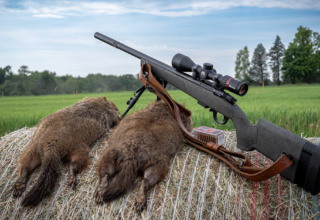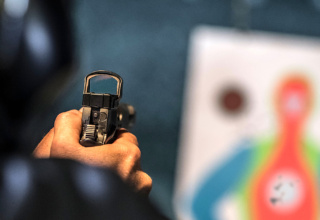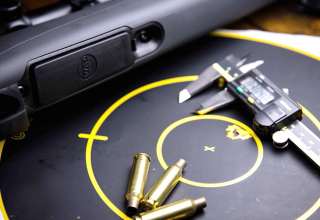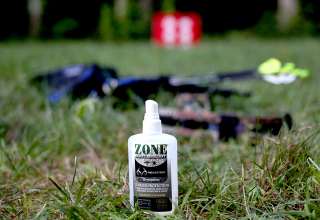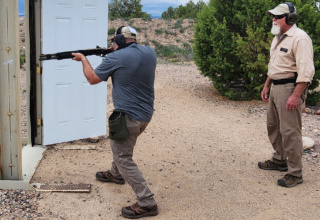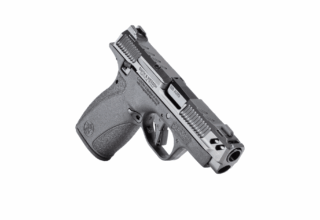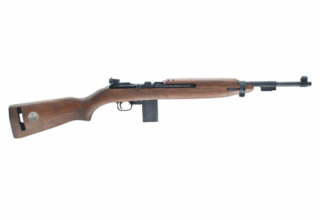Shooting big pistols is something I really enjoy. The bigger the caliber, the more I enjoy it – most of the time. Every now and then a gun finds its way into my hands that is a joy to shoot with, even though it can be punishing.
As a relatively new convert to black powder firearms, I was quickly attracted to the handgun side of things. I was recently able to acquire the last Traditions Vortex pistol available from the manufacturer. What a beast of a handgun! And while it is black powder, it feels like and shoots like a centerfire. With its behemoth barrel and inline .209 primer ignition, the Vortex may shoot black powder, but that is the only thing that separates it from other big handguns. Plus, it packs the stopping power of a .50 caliber. So, while I am thrilled to have it, it did not have the same feel that a traditional sidelock pistol has.

Traditions has two different styles of sidelock pistols, the Trapper and the Kentucky. The Trapper is available in both percussion and flintlock, while the Kentucky is available only in percussion. I was able to obtain the Trapper in percussion and flintlock. To that end, the Trapper pistols arrived, when I first picked one up, I must admit it felt like a pistol of this style should. It was heavy, with a weight-forward balance. The double-set triggers are smooth and assist with the accuracy of this pistol. An adjustable rear sight with a brass blade sight is a tad difficult to see with my aging eyes, but it keeps with the traditional look.
A single wedge keeps the pistol together. A 9.75-inch octagonal barrel nestled into a hardwood stock gives the Trapper a great feel. The barrel is rifled with a 1:20” twist that sends a .50 caliber round ball or cast bullet to its mark with remarkable accuracy. The two Trapper Pistols are identical with the exception of the lock mechanism. The percussion holds a # 11 percussion cap while the flintlock uses standard flint held tight in the vise of the hammer.
 Striking the frizzen, the 3 grains of powder in the pan are ignited and sends the ignition into the barrel. I have to say, shooting the percussion is akin to shooting a centerfire – or close. Shooting the flintlock is different. There is a slight but noticeable delay in the firing of the gun. When the trigger is pulled, the hammer falls, a flash occurs just before the gun fires. It is difficult not to flinch when the flash occurs. Nerves of steel are needed to use this gun accurately. If there were ever training exercises needed to force shooters to follow through with their shot, it would be using a flintlock. The nerves needed to hold still through the firing process takes a lot of practice. At least it did for me.
Striking the frizzen, the 3 grains of powder in the pan are ignited and sends the ignition into the barrel. I have to say, shooting the percussion is akin to shooting a centerfire – or close. Shooting the flintlock is different. There is a slight but noticeable delay in the firing of the gun. When the trigger is pulled, the hammer falls, a flash occurs just before the gun fires. It is difficult not to flinch when the flash occurs. Nerves of steel are needed to use this gun accurately. If there were ever training exercises needed to force shooters to follow through with their shot, it would be using a flintlock. The nerves needed to hold still through the firing process takes a lot of practice. At least it did for me.
Loads for the Trapper are not easily found. To be safe, I began very light, starting with 15 grains of FFFG powder with a patched round ball. This load seemed light but helps to get the feel of the gun in your hand. I slowly crept up the loads. Next was 20 grains of FFFG with the same round ball. During testing, I was able to work up to 45 grains with the same patched round ball, and it seemed to perform well, but a tad too much pressure for comfort. The happy place for plinking seemed to be in 27-30 grain range.
The Trapper is a joy to shoot. Traditions does not recommend hunting big game with it, since it will not produce the energy or velocity for humane kills of deer-sized game. But for small game, it will be a challenge and a lot of fun. Squirrel hunting with a blackpowder handgun is a good challenge. One I will take up when squirrel is back in season.
The Traditions Trapper Pistol sidelock percussion is one of the guns that looks good on your mantle, and one that is fun to drag out and shoot on Saturday afternoons. If you are looking for a gun that is fun to shoot, relatively inexpensive and affordable to have at the range, the Traditions Trapper is one to consider.


